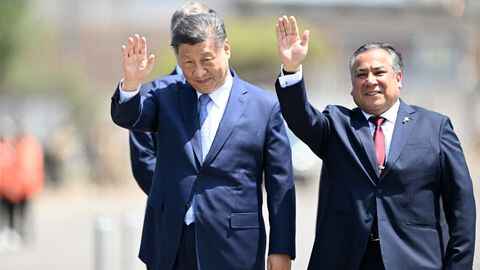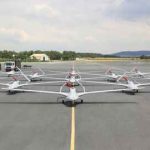A meeting between Xi and Biden will be closely watched because the US president-elect has indicated that he will take a combative stance toward Beijing during his second term in office.
Under the threat of a trade war with the new Donald Trump administration, Chinese President Xi Jinping has arrived in Peru for an Asia-Pacific conference where he will meet with US counterpart Joe Biden.
Hours before Biden’s anticipated landing on Thursday, the eve of a two-day heads-of-state gathering of the Asia-Pacific Economic Cooperation (APEC) grouping, Xi reached an aviation base outside the city Lima.
In what a US administration official said will probably be the final meeting between the current leaders of the world’s top economies before Biden relinquishes power to Trump, Biden and Xi are scheduled to meet bilaterally on Saturday.
They would “take stock of efforts to responsibly manage competition,” the source stated.
Established in 1989 with the intention of liberalizing regional trade, APEC unites 21 economies that collectively account for more than 40% of global trade and over 60% of the world’s GDP.
To set the tone for the two-day summit, APEC ministers, including US Secretary of State Antony Blinken, met behind closed doors in Lima on Thursday.
The goal of the APEC program was to promote inclusive growth through trade and investment.
However, as with the COP29 climate negotiations in Azerbaijan and the G20 conference in Rio de Janeiro next week, the agenda is now clouded by uncertainty about Trump’s future steps after his election victory on November 5.
The face-to-face meeting between Xi and Biden on Saturday will be widely monitored because the US president-elect has indicated that he will take a combative stance against Beijing during his second term in the White House.
Among other countries, Presidents and high-ranking officials from South Korea, Japan, Canada, Australia, and Indonesia will attend the summit.
Russia, a member of APEC, will not send its president, Vladimir Putin.
“America First”
Trump’s “America First” policy, which includes protectionist views on international trade, the extraction of fossil fuels, and international conflicts, is jeopardizing the coalitions Biden had established on topics ranging from trade and the climate catastrophe to the wars in the Middle East and Ukraine.
In an effort to balance bilateral trade, the Republican president-elect has threatened to impose tariffs of up to 60% on Chinese imports.
An additional trade conflict would simply exacerbate China’s long-standing housing crisis and slow demand.
However, analysts predict that punitive taxes will also hurt the US economy and have an impact on trade with Europe and its neighbors.
As North Korea and Russia’s strategic allies, China is increasing its own military might and applying more pressure to Taiwan, which it claims as part of its territory.
Through infrastructure and other initiatives under its Belt and Road Initiative, it is also extending its influence across Latin America.
On Thursday, Xi will open the first Chinese-funded port in South America, Chancay, which is located north of Lima.
In a piece for the official newspaper El Peruano, Xi stated that China was prepared to collaborate with Peru in order to “practice true multilateralism, promoting an egalitarian and orderly multipolar world and a universally beneficial and inclusive economic globalization.”
In the meantime, Biden will meet with two important US allies in Asia on Friday: South Korean President Yoon Suk Yeol and Japanese Prime Minister Shigeru Ishiba.
Ishiba stated that the goal of the discussions would be to “confirm and enhance” trilateral collaboration before to departing Tokyo for the summit.
He informed reporters that attempts were underway to meet with Xi.
“The two nations have disagreements. However, there are other matters on which we need to cooperate. Ishiba expressed his desire for an open discussion on these matters.
Trump’s economic targets are not limited to China.
In order to prevent what he described as a “onslaught of criminals and drugs” from crossing the border, the next US leader has threatened to impose tariffs of at least 25% on products coming from Mexico, another APEC member.






